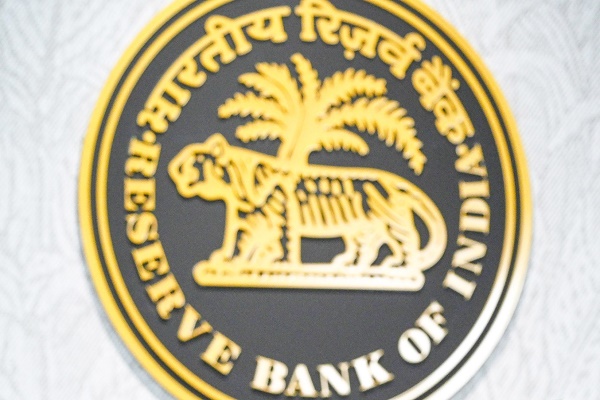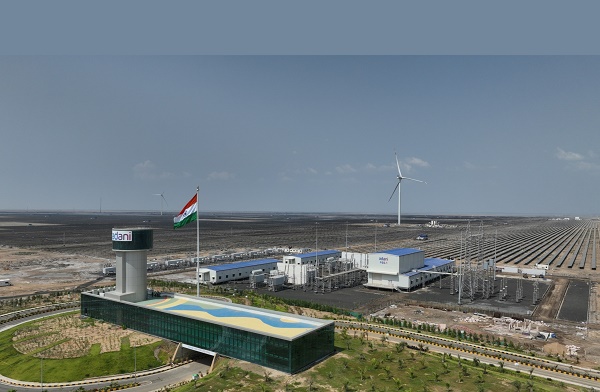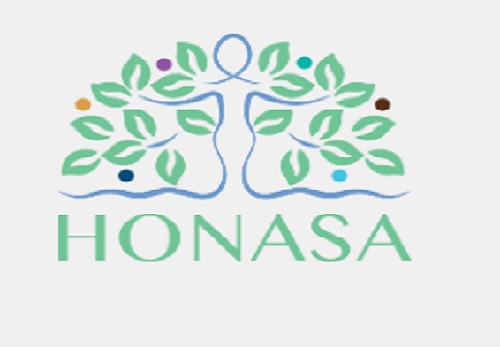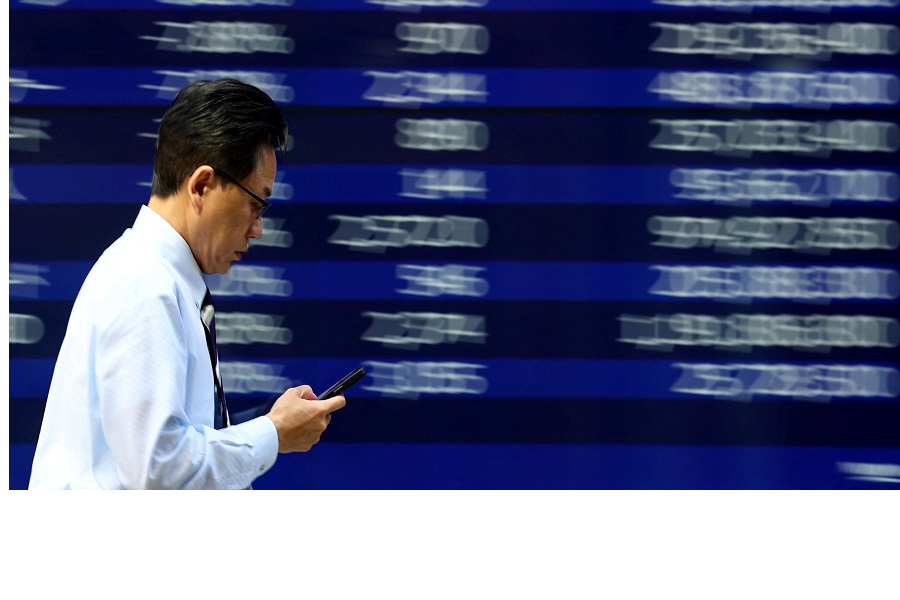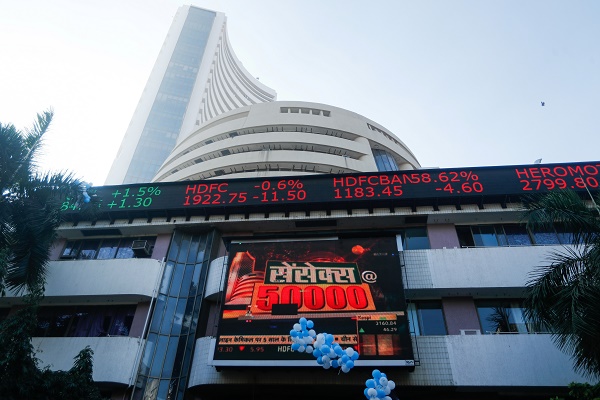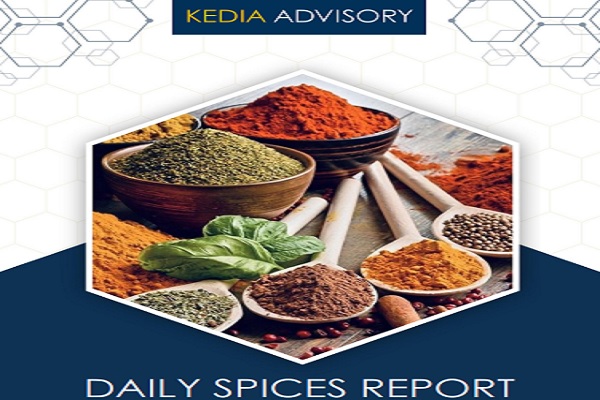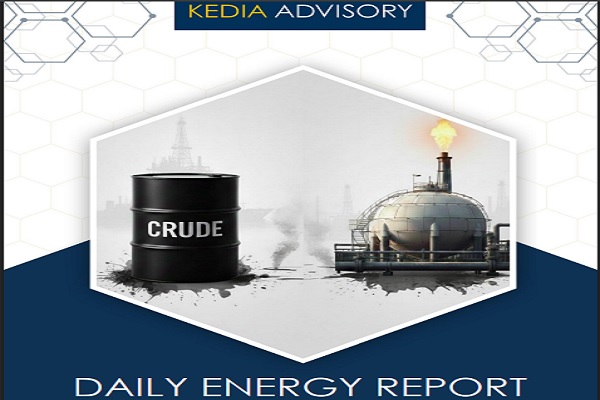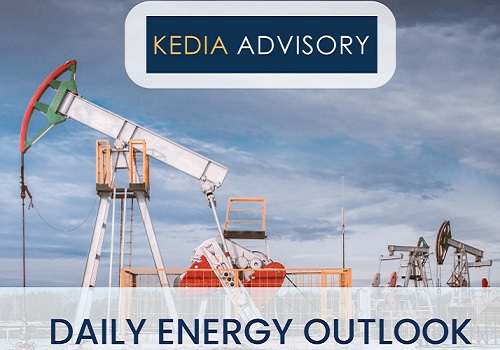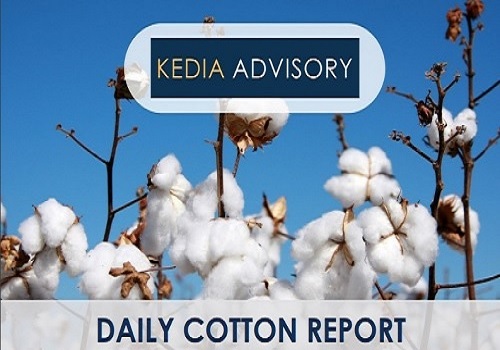Turmeric trading range for the day is 14266-15694 - Kedia Advisory

Gold
Gold prices rose 0.7% to 1,21,508 as the U.S. dollar weakened following the Federal Reserve’s 25-basis-point rate cut, which brought the benchmark rate to 3.75%–4.00%. The move boosted safe-haven demand for gold amid uncertainty over a U.S.–China trade deal, while Fed Chair Jerome Powell’s cautious tone signaled no clear commitment to further cuts in December. In the physical market, Indian demand eased as buyers awaited a price correction after the festive surge during Dhanteras and Diwali, though local dealers still quoted a $25/oz premium over domestic prices. In contrast, China and Singapore saw stronger buying interest following a pullback in global prices, with bullion trading at anywhere between a $20 discount to an $8 premium over the global benchmark. Japan also saw a modest $1 premium. According to the World Gold Council, global gold demand climbed 3% year-on-year to 1,313 tonnes in Q3 — the highest quarterly total on record — driven by a 17% rise in bar and coin investment, especially in India and China. ETF inflows surged 134%, offsetting a 23% drop in jewelry demand. Central banks increased their purchases by 10% to 219.9 tonnes, while total gold supply hit a record high, supported by 6% higher recycling and 2% growth in mine output. Technically, gold is under fresh buying, with open interest up 1.89% to 13,025 lots. Support is at 1,19,560, below which prices may test 1,17,605, while resistance is at 1,22,575, and a break above could push prices towards 1,23,635.
Trading Ideas:
* Gold trading range for the day is 117605-123635.
* Gold climbs on Fed rate cut as investors weigh US-China trade talks
* Trump says tariffs on China cut to 47% from 57%
* The U.S. central bank delivered a 25-basis-point rate cut, taking the benchmark overnight rate to a target range of 3.75%–4.00%.
Silver
Silver prices surged 1.89% to 1,48,840, supported by technical buying and a softer U.S. dollar as concerns over the prolonged U.S. government shutdown dampened sentiment and boosted demand for safe-haven assets. The Federal Reserve’s 25 bps rate cut, bringing the benchmark rate to 3.75–4.00%, along with the decision to end balance sheet runoff by December 1st, added further liquidity to the market and favored non-yielding assets like silver. However, uncertainty over the U.S.–China trade framework and a recent 6% profit-taking correction limited aggressive upside bets. Meanwhile, large silver shipments from the U.S. and China to London helped ease a liquidity crunch in the OTC market, where shortages had earlier pushed prices to a premium over U.S. Comex futures. London vaults held 24,581 tons of silver, valued at $36.5 billion at the end of September, according to the LBMA. Investment demand remains robust, with ETP inflows of 95 million ounces in the first half of 2025, lifting total holdings to 1.13 billion ounces, near the record highs of 2021. The Silver Institute projects the global silver deficit to narrow 21% to 117.6 million ounces this year amid higher supply and slightly lower demand, though coin and bar demand is expected to rise 7% after last year’s sharp fall. Technically, silver is witnessing short covering, with open interest down 2.02% to 19,598 lots. Support lies at 1,45,795, below which prices may test 1,42,750, while resistance is at 1,50,490, and a break above could push prices towards 1,52,140.
Trading Ideas:
* Silver trading range for the day is 142750-152140.
* Silver rose as technical buying met fresh policy developments.
* Concerns about economic risks stemming from a prolonged US government shutdown drag dollar away from an over two-week high.
* The Federal Reserve cut rates by 25 bps to a 3.75 to 4.00% target range and signalled an end to balance sheet runoff after November.
Crude oil
Crude oil prices edged 0.35% higher to 5,391 as traders assessed the potential for a U.S.–China trade truce after President Donald Trump’s move to lower tariffs on China, offering a modest lift to market sentiment. However, optimism was capped by persistent concerns over sluggish demand and rising global supply, reinforcing expectations of an oil surplus extending into 2026. The OPEC+ alliance confirmed plans to raise output by 137,000 barrels per day in December, in line with higher production from U.S. and North Sea operators, while tanker oil volumes at sea climbed to a record 1.4 billion barrels, signaling abundant inventories. The IEA raised its global supply growth forecast for 2025 following OPEC+ output hikes, while trimming demand expectations, citing weaker economic momentum. The agency expects oil use to grow by only 700,000 barrels per day annually through 2026. Meanwhile, U.S. crude inventories fell sharply by 6.858 million barrels, far exceeding expectations, though Cushing stocks rose by 1.334 million barrels. Gasoline and distillate inventories also declined by 5.941 million and 3.362 million barrels, respectively, reflecting healthy refining activity. OPEC maintained its demand growth outlook for 2025 and 2026 but noted the supply surplus risk as production ramps up. Technically, crude oil is witnessing short covering, with open interest down 0.01% to 14,294 lots. Support lies at 5,335, below which prices may test 5,279, while resistance is at 5,423, and a breakout could lift prices toward 5,455.
Trading Ideas:
* Crudeoil trading range for the day is 5279-5455.
* Crude oil recovered as investors assessed a potential trade truce between after U.S. President Trump lowered tariffs on China.
* OPEC+ likely to add another 137,000 bpd supply in December
* U.S. crude inventories dropped by 6.86 million barrels to 416 million barrels in the week.
Natural gas
Natural gas prices gained 2.92% to 348.6 as traders reacted to a combination of lower output and strong LNG export flows, despite forecasts for mild weather likely curbing near-term heating demand. Production in the Lower 48 U.S. states averaged 107.0 billion cubic feet per day (bcfd) so far in October, easing from 107.5 bcfd in September and below August’s record 108.0 bcfd, signaling a modest tightening in supply. The LNG export demand remained robust, with flows to U.S. export terminals climbing to 16.5 bcfd, marking a new monthly high and surpassing the previous record of 16.0 bcfd set in April. Meanwhile, U.S. storage levels rose by 74 billion cubic feet to 3,853 bcf during the week ending October 24, slightly above expectations, leaving inventories 4.6% above the five-year average and 0.8% higher year-on-year. Meteorologists continue to project warmer-than-usual weather through mid-November, which could cap domestic consumption. However, strong export momentum is providing price support. The EIA’s Short-Term Energy Outlook reinforced a bullish longer-term view, forecasting record U.S. gas production of 107.1 bcfd in 2025 and 107.4 bcfd in 2026, alongside rising consumption of 91.6 bcfd in both years. LNG exports are projected to reach 14.7 bcfd in 2025 and 16.3 bcfd in 2026, up sharply from 2024 levels. Technically, the market is witnessing short covering, with open interest down 0.01% to 17,584 lots. Support is at 339.8, below which prices could test 330.9, while resistance is seen at 353.8, and a breakout above may push prices toward 358.9.
Trading Ideas:
* Naturalgas trading range for the day is 330.9-358.9.
* Natural gas climbed amid near-record flows to LNG export plants and a drop in output so far this month.
* Gas output in Lower 48 states falls to 107.0 bcfd in October
* LNG export feedgas on track for monthly record high of 16.5 bcfd in October
Copper
Copper prices slipped 0.94% to 1011.75 as traders reacted to the conclusion of trade talks between the U.S. and China, which offered mixed signals for market sentiment. While President Trump announced a reduction in tariffs on China and Beijing pledged to ease rare earth export restrictions and resume soybean purchases, concerns lingered over global demand amid cautious remarks from Fed Chair Jerome Powell following a 25-bps U.S. rate cut. Despite short-term weakness, copper prices found some underlying support from tightening supply. Major producers such as Glencore and Anglo American reported lower output in the first nine months of 2025, while mine disruptions in Chile and Indonesia, particularly at Freeport-McMoRan’s Grasberg mine, have constrained shipments. China’s copper concentrate imports dropped 6.2% in September to 2.59 million tons, reflecting reduced exports from Indonesia after license expirations and a fatal mudslide that forced production halts. On the supply-demand balance, the International Copper Study Group (ICSG) projected a 178,000-tonne surplus in the refined copper market for 2025, followed by a 150,000-tonne deficit in 2026. World mine production is expected to rise by 1.4% in 2025 and 2.3% in 2026, while refined usage is forecast to increase by 3% and 2.1%, respectively. Technically, copper is under fresh selling pressure, with open interest up 12.55% to 9,468 lots as prices declined by 9.65. Support is at 1003.9, below which prices may test 996.1, while resistance lies at 1021, and a breakout above could push prices toward 1030.3.
Trading Ideas:
* Copper trading range for the day is 996.1-1030.3.
* Copper retreated after US President Donald Trump and his Chinese counterpart Xi Jinping concluded pivotal trade talks.
* Trump agreed to cut fentanyl tariffs on China by half to 10%, while adding that Beijing pledged to pause rare earth export restrictions for one year.
* Ongoing mine disruptions in Chile and Indonesia have further driven expectations of higher prices next year.
Zinc
Zinc prices edged lower by 0.41% to 300.3 amid a cautious tone in the metals market, as traders weighed rising global output against persistently tight inventories outside China. Global refined zinc production is projected to increase 2.7% to 13.8 million tonnes in 2025, yet available supply remains constrained in key Western markets. LME zinc stocks have plunged to just 35,200 tonnes, near their lowest since March 2023, marking an 85% drawdown from the start of the year and signaling an acute supply squeeze. In contrast, China’s zinc inventories have surged, reaching 162,000 tonnes as of October 23, compared with about 100,000 tonnes in early 2025. This divergence—tightness overseas and rising stocks in China—highlights a bifurcated market. China’s refined zinc production fell 4% month-on-month in September but was up over 20% year-on-year, with cumulative output for January–September up 9% YoY. October production is expected to rise another 4% MoM and 22% YoY, despite maintenance shutdowns in several provinces. According to the International Lead and Zinc Study Group (ILZSG), the global zinc market showed a 47,900-tonne surplus in August, bringing the year-to-date surplus to 154,000 tonnes. Technically, zinc remains under fresh selling pressure, with open interest up 0.62% to 2,738 lots as prices declined by 1.25. Support is seen at 298.8, below which prices could test 297.2, while resistance is at 302.2, and a breakout above may push prices to 304.
Trading Ideas:
* Zinc trading range for the day is 297.2-304.
* Zinc prices dropped as global refined zinc metal production is projected to rise 2.7% to 13.8 million mt in 2025.
* Inventories have plunged to extremely low levels in the global zinc market outside China.
* LME zinc stocks of just 35,200 tons near their lowest since March 2023.
Aluminium
Aluminium yesterday settled lower by -0.72% at 270.25 as the U.S. dollar hovered near two-week highs after the Federal Reserve’s rate cut, weighing on sentiment and raising concerns about red-metal demand. However, downside remained limited with LME prices staying above $2,900 per tonne — their highest in over three years — supported by short-term supply constraints and robust long-term demand prospects. Supply disruptions from major smelters added to the tightness, including the suspension of one potline at Iceland’s Grundartangi smelter and Alcoa’s decision to close its Kwinana alumina refinery in Australia due to declining bauxite quality. Global primary aluminium output in September rose 0.9% YoY to 6.08 million tonnes, while Japanese port inventories increased 1.8% to 341,300 tonnes. Meanwhile, China’s output is nearing the government’s 45 million-ton cap, signaling potential restrictions ahead. Beijing’s reduction in annual base metal output growth targets to 1.5% for 2025–26 from 5% earlier further underscored tightening supply expectations. On the trade front, China’s aluminium imports surged 35.4% YoY in September to 360,000 tonnes, while exports slipped slightly to 521,000 tonnes. Technically, the market is under long liquidation as open interest dropped -6.59% to 3,827 while prices declined -1.95 rupees. Aluminium is finding support at 268.8, and a break below could test 267.4 levels, while resistance is likely at 271.8; a move above this may push prices toward 273.4 levels.
Trading Ideas:
* Aluminium trading range for the day is 267.4-273.4.
* Aluminium dropped as dollar consolidated around two-week highs after the Fed cut interest rates.
* Century Aluminium said its smelter in Iceland was forced to curtail production by two thirds due to an electrical equipment failure.
* Global primary aluminium output in September rose 0.9% year on year to 6.08 million tonnes.
Turmeric
Turmeric prices rose 2.45% to 15,066 as yields in Maharashtra, Andhra Pradesh, and Karnataka were impacted by heavy rains, tightening supply in major trading hubs like Erode. Continuous rainfall has triggered disease outbreaks in some areas, with high humidity hampering storage and preservation. In Nanded, around 15% of turmeric crop area has been damaged due to excessive rainfall, further supporting prices. Additionally, low arrivals and cautious farmer selling amid nearly depleted stocks in Warangal are keeping the market firm. However, the upside remains capped as acreage has increased in the 2024–25 season due to favorable monsoon conditions. The total area under turmeric cultivation has risen to 3.30 lakh hectares, about 10% higher than the previous year’s 3 lakh hectares. Despite this, short-term sentiment remains positive, supported by steady demand and crop concerns. At Duggirala market, robust buyer activity and premium pricing for new-season produce are evident, with daily arrivals between 1,000–1,200 bags, and around 50–55% of the new crop already traded. On the export front, turmeric exports during April–August 2025 rose 3.31% YoY to 80,156.56 tonnes, with August exports up 7.27% YoY and 13.71% MoM, highlighting steady overseas demand. In Nizamabad, spot prices gained 0.6% to 14,614.3. Technically, the market is under fresh buying, with open interest up 1.33% to 11,795 lots. Support is at 14,666, below which prices may test 14,266, while resistance is seen at 15,380, and a move above could push prices toward 15,694.
Trading Ideas:
* Turmeric trading range for the day is 14266-15694.
* Turmeric gains as yields in Maharashtra, Andhra Pradesh and Karnataka have been affected due to rains.
* Due to continuous rains in Erode, disease outbreaks have started emerging in some areas.
* Recent heavy rainfall in Nanded has adversely affected the region's turmeric cultivation, damaging approximately 15% of the crop area.
* In Nizamabad, a major spot market, the price ended at 14614.3 Rupees gained by 0.6 percent.
Jeera
Jeera prices rose 0.85% to 20,100 on selective buying amid low arrivals, as Diwali holidays reduced trading activity across key mandis. Support also came after the GST Council lowered the GST rate to 5%, which is expected to boost FMCG exports and domestic consumption. However, the upside remained limited due to weak export demand following the end of the retail season and continued foreign buyer inactivity. Comfortable domestic supplies and ample carry-forward stocks have also capped gains. Currently, farmers are estimated to hold around 20 lakh bags of cumin, out of which only 3–4 lakh bags may be traded before the end of the season, leaving nearly 16 lakh bags as carry-forward stock. Production for the current season is expected to remain similar to last year, with Gujarat producing around 42–45 lakh bags and Rajasthan about 48–50 lakh bags. On the global front, output from Syria, Turkey, and Afghanistan remains low, but this has not translated into stronger export demand from India due to weak overseas interest. Jeera exports during April–August 2025 fell 17.02% YoY to 85,977.39 tonnes, though August exports rose 3.24% YoY to 12,951.04 tonnes. In Unjha, prices slipped 0.51% to 19,808.5. Technically, the market is under short covering, with open interest down 1.8% to 2,943 lots. Support is at 19,900, below which prices could test 19,700, while resistance is seen at 20,250, and a move above may push prices towards 20,400.
Trading Ideas:
* Jeera trading range for the day is 19700-20400.
* Jeera ended with gains on level buying amid low arrivals.
* Support seen after GST council lowers GST rate to 5% which will support FMCG exports & domestic demand.
* Jeera exports during Apr - Aug 2025, dropped by 17.02 percent at 85977.39 tonnes as compared to Apr - Aug 2024.
* In Unjha, a major spot market, the price ended at 19808.5 Rupees dropped by -0.51 percent.
Views express by all participants are for information & academic purpose only. Kindly read disclaimer before referring below views



